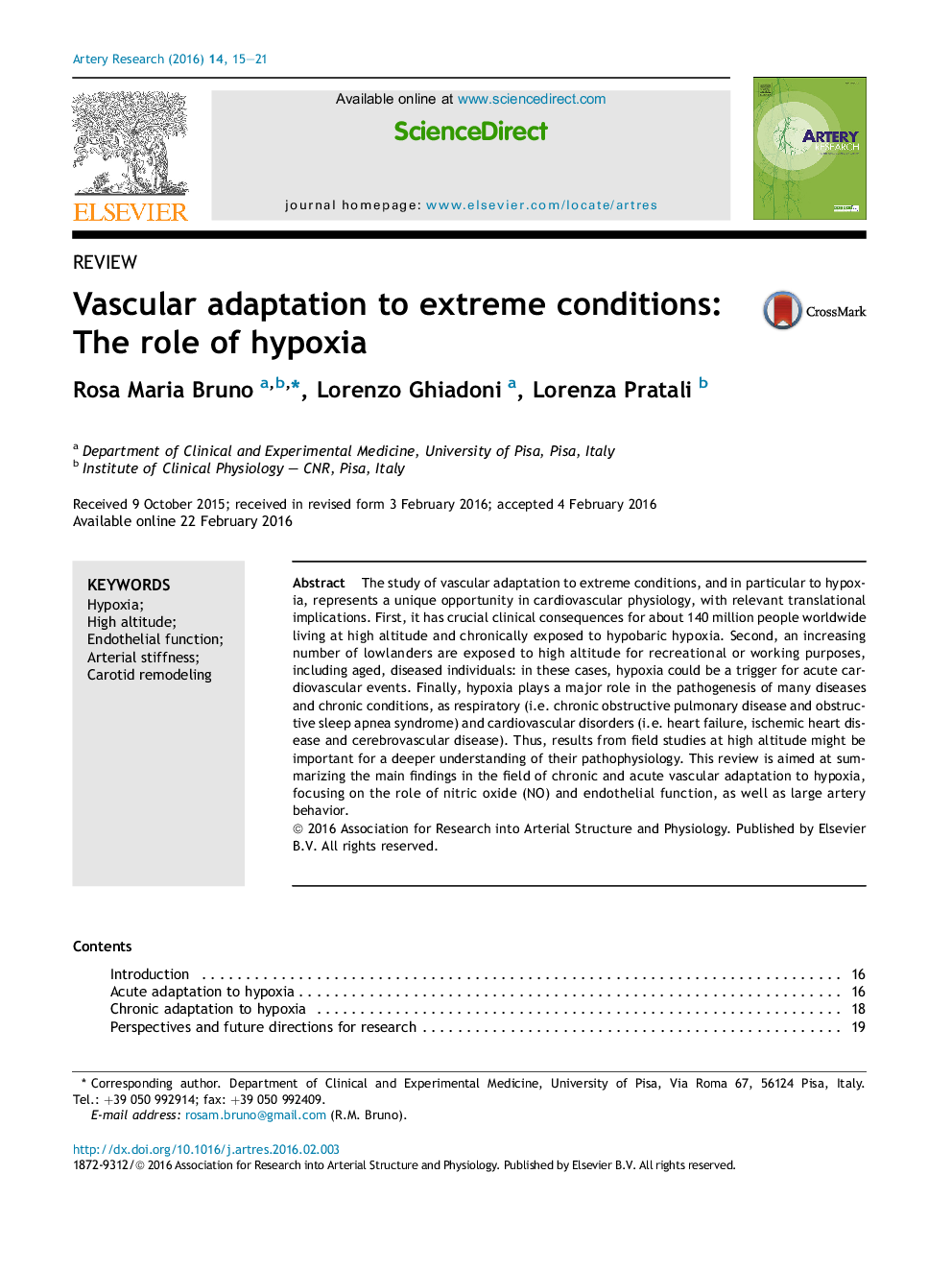| Article ID | Journal | Published Year | Pages | File Type |
|---|---|---|---|---|
| 2891364 | Artery Research | 2016 | 7 Pages |
•The study of vascular adaptation to hypoxia has relevant translational consequences.•Acute adaptation to hypoxia is dominated by NO-mediated hypoxic vasodilation.•A blunted acute vascular response to hypoxia might lead to acute mountain sickness.•Hypoxia chronically induces endothelial dysfunction and carotid enlargement.•Chronic exposure to hypoxia might be deleterious for cardiovascular prognosis.
The study of vascular adaptation to extreme conditions, and in particular to hypoxia, represents a unique opportunity in cardiovascular physiology, with relevant translational implications. First, it has crucial clinical consequences for about 140 million people worldwide living at high altitude and chronically exposed to hypobaric hypoxia. Second, an increasing number of lowlanders are exposed to high altitude for recreational or working purposes, including aged, diseased individuals: in these cases, hypoxia could be a trigger for acute cardiovascular events. Finally, hypoxia plays a major role in the pathogenesis of many diseases and chronic conditions, as respiratory (i.e. chronic obstructive pulmonary disease and obstructive sleep apnea syndrome) and cardiovascular disorders (i.e. heart failure, ischemic heart disease and cerebrovascular disease). Thus, results from field studies at high altitude might be important for a deeper understanding of their pathophysiology. This review is aimed at summarizing the main findings in the field of chronic and acute vascular adaptation to hypoxia, focusing on the role of nitric oxide (NO) and endothelial function, as well as large artery behavior.
